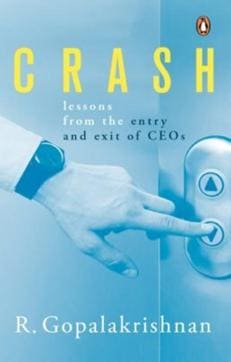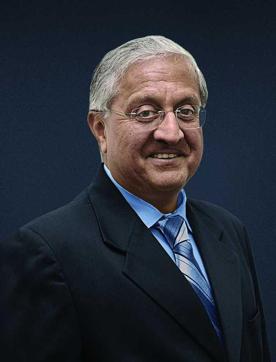Crash; Lessons From The Entry and Exit of CEOs by R Gopalakrishnan
R Gopalakrishnan’s Crash reveals that the yardsticks of assessing leadership performance are wholly unclear.

This book subtitled “Lessons from the entry and exit of CEOs” sounds like a heavyweight management text book. But it reads almost like a story book thanks to R Gopalakrishnan’s style. His self-confidence stems from his familiarity with opening and closing boardroom doors in Lever and Tata.
The author doesn’t mince words describing anxious and ambitious career seekers on the bottom rung of the corporate ladder staring longingly at its upper rungs. Surely it is common sense to cut the clumsy clutter of ladders altogether and usher those of noble breed, the Grand Panjandrum’s direct seed, into elevators headed for the boardroom floor? No, says Gopalakrishnan, it isn’t sense. He fleetingly drops into first-person mode: “Like thousands of others, I was no different as I studied at IIT-Kharagpur, joined Hindustan Lever and devoured books on how to succeed.” While he once saw himself as one among thousands, several decades down the line, the numbers of fire-in-the belly wannabes have multiplied. With maturity ripened by years of achievement, the author reflects on experiences both missed and encashed. This treasure chest of shared analyses is the book’s unparalleled strength.
It is intriguing, ruminates Gopalakrishnan, himself an architect of many selections, how companies select accomplished leaders. Some prefer their own distinctive process of interviews, some thoroughly check references or even conduct psychometric testing. They ask themselves whether top-of-the-list probables possess adequate “hardware of skills” meaning technical knowledge to do the job efficiently as well as the “software” of required behavioural skills. If a choice doesn’t work out the fault may be with the candidate or the company’s operating system (OS). “In many cases the relationship between the newly-appointed leader and the OS comprising directors, colleagues, shareholders suffer irreparable tears,” he warns, “... wherever the fault might lie it results in the leader parting from the company and this is attributed to ‘cultural differences’.”
Next, the narrative moves on to the subject of “Staying Up There”. It’s quite a bit of fun to read and though the author covers tricky ground he doesn’t lose elan. After all, a good part of his distinguished management career owes much to his “staying-up-there” skill.
To paraphrase his views on this fascinating subject, it takes something quite different to stay up there from what it took to get up there in the first place. This is because the yardsticks of assessing leadership performance are wholly unclear. In Gopalakrishnan’s experience, ‘cultural fit’ or its absence leads to the exit of CEOs. It may or may not be a good idea for the CEO to tardily maintain his relationship with the chairman. Everything depends on subjective preferences. Ultimately, it all rests on the leader’s ability to take risks. If the CEO quits without making a fuss or tom-tomming the oddities of his chairman’s demands, the fashionable euphemism is to say he couldn’t manage to avoid a business leader’s ‘exit victim syndrome.’ For quite a few, the humour in this part of the tale is unpalatably dark.

The author debunks a possible charge that these analyses aren’t illustrated with true-to-life examples. He looks beyond Indian borders to construct Part Two, which gives the book the sheen of authentic international boardroom drama. Illustrative case studies include external hire Richard Thomas (Xerox), internal hires Lee Iacocca, Mark Fields (both Ford Motor), John Walter (left RR Donnelly to join AT&T). He also writes of how Warren Buffett lunched with Anshu Jain and predicted: “That boy will be running an investment bank one of these days.” He did (Deutsche Bank).
Read more: Excerpt: The Made In India Manager by R Gopalakrishnan and Ranjan Banerjee
Gopalakrishnan ends with a point to ponder: “The hard truth for business leaders is that performance cannot be judged only through one part which is tangible and measurable. The second part is culture fit and leadership style.”
Read this book.
Sujoy Gupta is a business historian and biographer.






